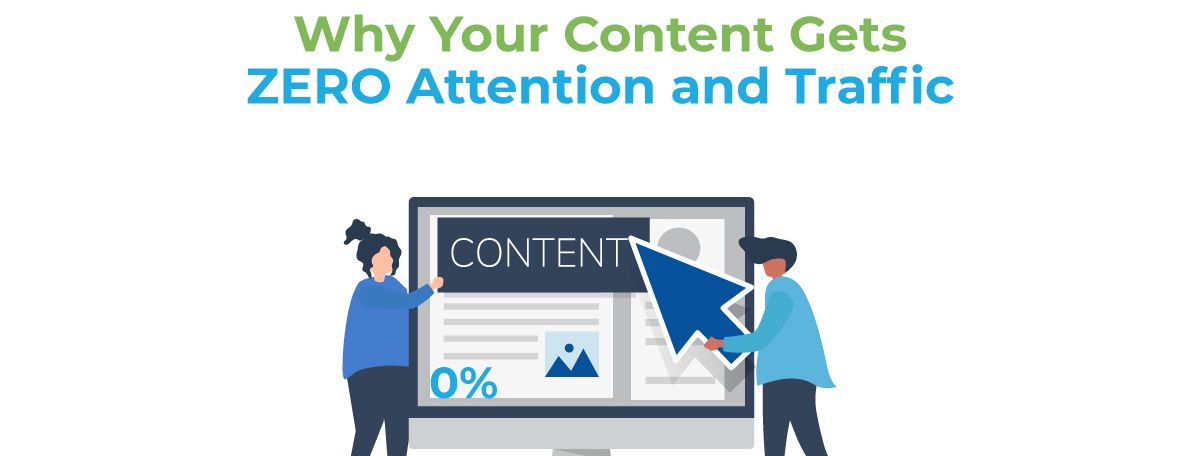Content, content, content. Seems to be all that people are discussing these days, right?
While it’s true that content is king, what happens when the content you’ve worked so hard on doesn’t get any attention or traffic? Well lucky you, that’s what we’ll be discussing today!
What is a Content Marketing Strategy?
The reality is that content alone won’t market your business… But having a content strategy will put intention behind your content. In fact, 20% of all business owners believe that content will be the most effective strategy to curate for the upcoming years. But what is a content marketing strategy? Simply put, a content strategy is the process of creating, planning, implementing and delivering specific types of content, such as social media posts, blogs, web copy, etc. It must be well structured, easily understood and easily found by visitors to whatever platform you’re posting said content on.
Now that we know what a content marketing strategy is, let’s talk about how one does it.
4 Things You Should Be Doing to Optimize Your Content
Content optimization comes after creating the content strategy. This is where once your content has been created, it’s now time to figure out where to put it so that you’ll be reaching the largest target audience possible.
#1: Quality Over Quantity
When making content, think about what you’re creating. Don’t just post whatever you want whenever you want– this is sloppy, and your audience will be able to tell because there’s no continuous theme. And why would someone want to follow a business that has no consistency and is all over the place? Remember, the goal of all of this is to follow a strategic content marketing plan that is the guide for you and your audience. People want a brand that they can connect with and rely on. Once your audience realizes that you’re sharing valuable, consistent content, they’ll visit more often.
#2: Consider Different Types of Content
Not all content is the same.There’s hundreds of creative ways out there: polls, videos, blogs, ebooks, guides, case studies, etc that you should be using in your content plan. One of our favorite types of content is using videos to grab attention, as well as infographics. Infographics are extremely popular, with over 41% of marketers using this form for their audience. Visually watching something can be more enjoyable for some people who don’t like reading or just want to casually be on their phone. Just make sure you are creating content your target audience will engage with. Another thing to remember is not to confuse content with sales pitches. We know it seems the whole purpose is to create sales… but this generation’s customers don’t like to be sold to. Customers are able to discover options without needing to talk to a salesperson. Your content’s goal should be to educate them, and to bring value to your audience. Be genuine and transparent.
#3: Know Your Buyer’s Journey
Your content marketing plan should be formatted to meet the unique needs of your buyer through every stage of their journey. Here is what their journey might look like.
First, you need to become aware of your brand. Be engaging and entertaining enough to stand out from all the mountains of information already out there. For example, Red
Bull uses videos to show off extreme sports and events. Watching someone do a backflip off a mountain while they’re skiing is pretty attention grabbing, isn’t it? We’re not saying you need to be pulling off stunts (don’t try this at home, kids), but we are saying that your content needs to be entertaining and attention grabbing.
Next comes consideration. Your audience needs to be able to understand the solutions you’re providing to their problems. The content you create for them, as written in your content strategy, could include videos, case studies and podcasts. Anything that helps them clearly see and acknowledge that this is a solution to a problem they’re having.
Next up is the decision phase. This is where you’ll truly find out if your content is clear and relatable. At this stage, you’ll be seeing a lot of potential leads. Now it’s time to test if your lead will decide if your product or service is right for them. It’s beneficial to perhaps encourage their decision with product review, testimonials or demonstration videos. Give them a little extra nudge, but don’t be sales pitchy. Too much too soon will easily drive a customer away.
If your customer decides to buy, they’ve finally reached the delight phase of the buyer’s journey. Congrats! After they’ve purchased your product or service, thank them. After a few weeks or so, feel free to ask about their experience with buying from your business. They might even leave a review, so as to help the next customer make their decision.
If your customer doesn’t decide to buy, if you have their information, such as abandoned cart notifications, it might be helpful to send a little reminder to them about what they left behind. Always be looking at your competitors and what they might be doing better than you.
#4: Search Engine Optimization and Content
The bottom line, you want your audience to be able to find what you’re creating. This means it
needs to be properly “optimized”. What’s the point of creating content anyways if no one is able to see it? That’s where content optimization comes into play. This is basically the process of using SEO, or search engine optimization, to get your content displayed to the right audience.
Here are some tips to get you started:
- Use keywords in each piece of content you create. Simply guessing whatyour audience will search won’t work. You need to find keywords that are high in average monthly searches, but low in competition. You can use a tool like SEMRush for this, or Google Search Console will also be your best friend.
- Make sure your meta descriptions and titles are written out and include your keywords in them.
- When blogging, reference to other bloggers or articles. This helps create backlinks, which are basically trails from one website to another. Ask other creators to mention your site and link it in their own articles.
- Use social media marketing and link to your website in the posts, or in the bio.
Don’t let your content be ignored. Content is king, but just creating content and posting it won’t work in this massive digital world. It takes time to craft specific content and messages your audience will want to engage with. Keep these tips in mind when creating your content marketing strategy, and be sure to tag us on Instagram @targetrivermarketing if these have helped you!
Target River is an award winning digital marketing agency, and was named the Best Marketing Agency of 2020, as well as being awarded by the State of Utah within 14 different categories of marketing. We pride ourselves on providing you with real information, written by real marketers. If you or someone you know needs help with marketing their business, contact us today and fill out a contact form!

